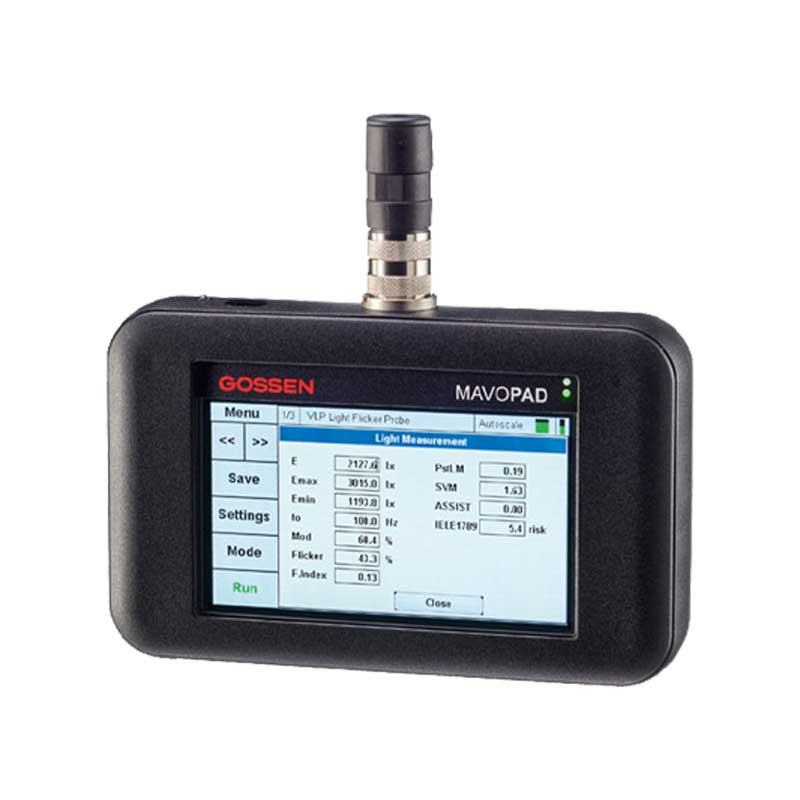Brightness fluctuation results from the fact that LEDs very quickly respond to voltage fluctuations. Flicker influences human health and mood, and our sense of well-being. It can trigger epileptic seizures, migraine headaches, fatigue, restricted visual acuity, distraction and impaired vision. In the case of rotating objects, the strobe effect can lead to erroneous evaluations and accidents.
Previous time range parameters such as flicker percentage, flicker index and flicker frequency are no longer sufficient, which is why new calculation procedures and parameters have been developed. These include PstLM and SVM, whose importance has increased due to the establishment of limit values in EU ecodesign requirements. Flicker assessments in accordance with IEEE 1789 and ASSIST Mp are used outside of Europe.
The universal MAVOPAD covers all of these calculation procedures and flicker parameters. In addition to displaying the parameters, the time curve and the frequency spectrum are also depicted. High 16-bit resolution and a fast sampling rate of up to 1.6 MHz even make it possible to measure lighting dimmed with high PWM frequencies. By means of updates, the MAVOPAD is also open for additional complex evaluation procedures.

